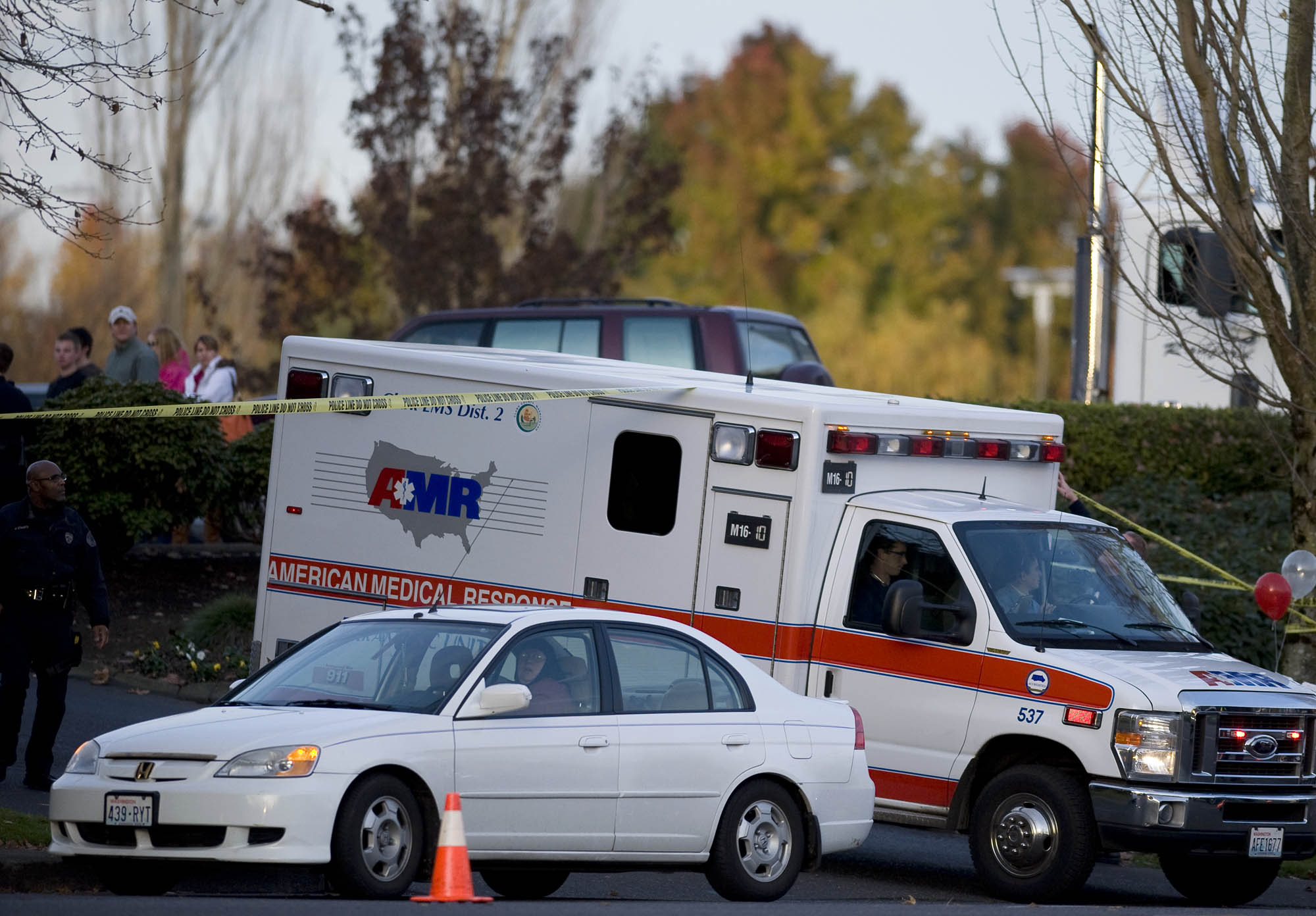If an individual does not want to be enrolled in the OHSU study, he or she can decline participation by wearing a “No Study” bracelet. To request a bracelet, call 503-494-8083 or email roc@ohsu.edu.
Trauma and cardiac arrest patients in Clark County may unknowingly be helping emergency responders answer a vital question: Are current treatment methods effective?
Several Clark County emergency medical services agencies are participating in two National Institutes of Health trials. The trials, which are being led by Oregon Health and Science University in Portland, are designed to evaluate the effectiveness of medical practices when treating people in cardiac arrest and people with trauma injuries.
“Our goal in fire service and EMS is to provide the most advanced, research-supported, life-saving service,” said Cliff Free, EMS division chief for the Camas Fire Department. “We only can do that by validating the treatment.”
The studies will be conducted under Food and Drug Administration regulations that allow the research without the informed consent of the patient, since patients are likely to be unconscious and unable to give consent.
“As we look at strategies, we have to look at what we’re doing and if it’s causing more harm, we need to stop doing it,” said Dr. Mohamud Daya, associate professor of emergency medicine at OHSU and principal investigator for the studies. “We give these drugs without true evidence of whether they work or not. There’s really no other way to do these studies without the exception to informed consent.”
The first study, called ALPS, began last month and will enroll about 300 people in the Portland/Vancouver area. Local participating agencies include Clark County Fire District 6, Camas Fire Department, Vancouver Fire Department and North Country EMS.
The purpose of the study is to determine whether the heart rhythm drugs Amiodarone and Lidocaine improve survival rates for people in cardiac arrest. The study will take up to three years to complete.
Emergency responders use the heart rhythm drugs when patients’ hearts don’t have a shockable rhythm, in other words, people whose hearts are beating chaotically. Typically, responders will administer one of the two medications to try and steady the rhythm.
For the study, responders with such patients will open a kit with syringes. The syringes will contain one of three doses of medication — either Amiodarone or Lidocaine — or saline (salt water).
“They won’t know what they’re giving, nor will the patient or the receiving physician,” Daya said.
Later, researchers will scan bar codes on the syringe packaging to identify the contents of the syringe.
HypoResus trial
The other trial, HypoResus, began Friday and will only enroll a couple dozen people from the metro area. The trial is a pilot study and may be replicated later with more people.
LifeFlight is currently the only agency participating in the trial, but a handful of other agencies will be added in coming weeks, including Camas Fire Department, Clark County American Medical Response and PeaceHealth Southwest Medical Center.
The purpose of the trial is to determine whether trauma patients with low blood pressure benefit from receiving small or large amounts of saline.
Typically, when responders encounter someone with traumatic injuries (other than a head injury) and low blood pressure, they administer saline to increase blood pressure, Daya said.
“The current standard is to give lots of fluid through an intravenous line to keep blood flowing to vital organs,” he said. “Now we suspect that too much fluid may actually increase bleeding by popping established clots off holes in blood vessels.”
For the study, responders will open a kit that will contain either 1 liter or 250 cubic centimeters of saline. The responder will give the patient the fluid until his or her blood pressure reaches a specific rate or the bag of fluid is gone, whichever occurs first, Daya said. Researchers will then determine whether more or less fluid is beneficial, he said.
The pilot study will likely conclude in less than a year, he said.
Emergency medical services are constantly evolving, Free said. The studies can determine whether historical methods are still the most effective way of treating patients. If not, agencies can re-evaluate and modify how they deliver care, he said.
Daya agreed.
“I hope people understand the intent of the studies is to add some evidence to what we do, and high-quality evidence,” Daya said.




